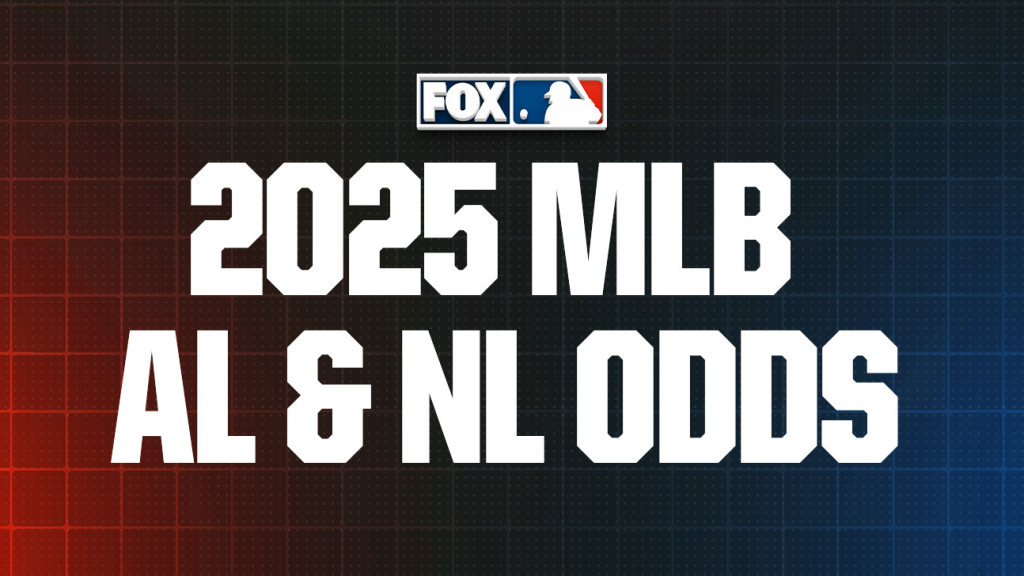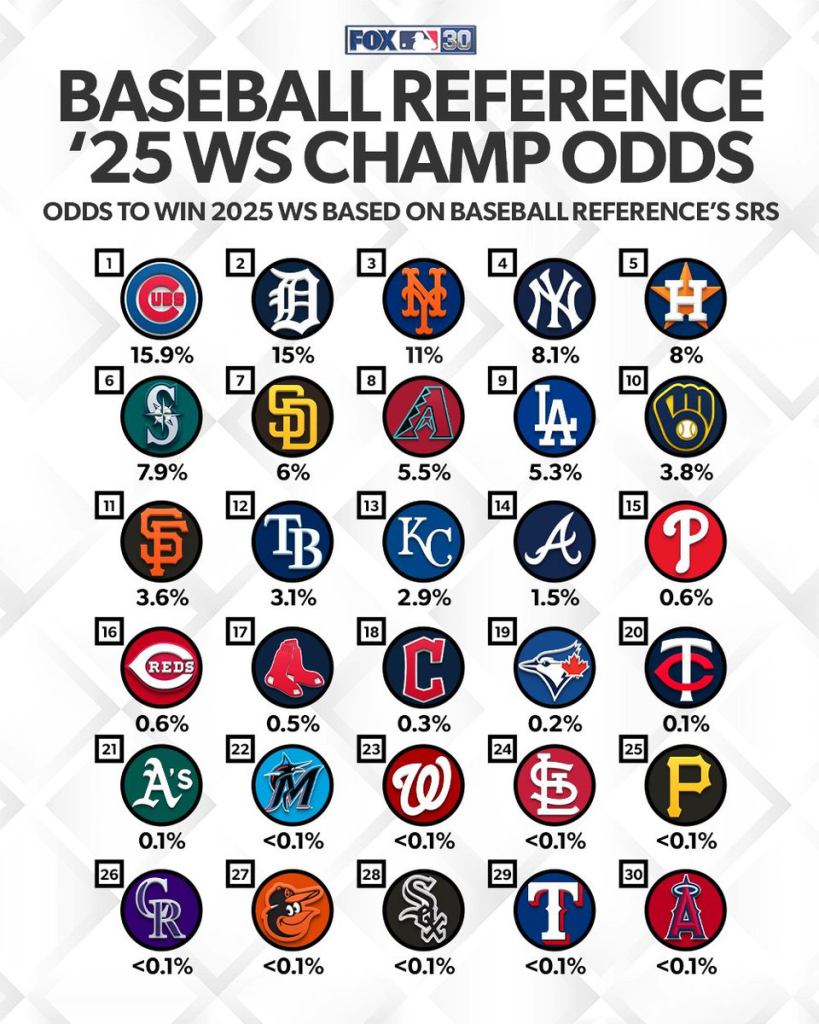What Are MLB Odds?
MLB Betting Odds are the numbers that sportsbooks use to show how likely each baseball outcome is and how much money you can win if your bet is correct.
They’re the foundation of betting on Major League Baseball — whether you’re wagering on a team to win, how many runs will be scored, or a player’s performance.
🧮 What Odds Tell You
MLB odds show two key things:
- Probability – How likely something is to happen (according to the sportsbook).
- Payout – How much profit you’ll make if your bet wins.

MLB Betting Odds Explained
When you look at MLB betting lines, you’ll typically see moneyline odds, run line odds, and over/under (total runs). Each tells you something different about the game and potential payouts.
1. Moneyline Odds
The moneyline is the simplest MLB bet — you’re just picking which team will win the game.
Example:
| Team | Odds |
| New York Yankees | -150 |
| Boston Red Sox | +130 |
- Negative odds (-150) → the favorite.
You must bet $150 to win $100 (plus your stake back if you win). - Positive odds (+130) → the underdog.
You win $130 for every $100 bet (plus your stake).
Formula for implied probability:


So:
- Yankees (-150) → 60% implied chance of winning
- Red Sox (+130) → 43.5% implied chance
(Note: The total exceeds 100% because of the sportsbook’s “vig” or commission.)
2. Run Line (Spread) Bets
The run line is baseball’s version of the point spread — usually ±1.5 runs.
Example:
| Team | Run Line | Odds |
| Dodgers | -1.5 (+120) | |
| Cubs | +1.5 (-140) |
- Dodgers -1.5 (+120): Must win by 2+ runs to cover. If they do, a $100 bet pays $120 profit.
- Cubs +1.5 (-140): Can win outright or lose by 1 run and still cover, but you must risk $140 to win $100.
3. Totals (Over/Under)
This bet is on the total number of runs scored by both teams combined.
Example:
| Bet Type | Line | Odds |
| Over 8.5 | -110 | |
| Under 8.5 | -110 |
- Over 8.5: Win if the teams combine for 9+ runs.
- Under 8.5: Win if the total is 8 runs or fewer.
The -110 odds mean you’d bet $110 to win $100.
4. Prop Bets & Futures
- Player props: e.g. Aaron Judge over 1.5 total bases
- Team props: e.g. Yankees to score first
- Futures: e.g. Dodgers to win the World Series (+400)
Futures odds work the same way — a $100 bet at +400 pays $400 profit if it hits.
5. How to Use MLB Odds
Here’s how bettors use odds strategically:
- Compare implied probabilities to their own predictions (value betting).
- Line shopping across sportsbooks for better odds.
- Track closing line movement (CLV): if your odds beat the closing line, you’re likely making good bets over time.
- Use stats: pitcher matchups, bullpen rest, weather, and park factors all affect totals and run lines.
Quick Reference Table
| Bet Type | What It Means | Common Line | Win Requirement |
| Moneyline | Pick the winner | e.g. NYY -150 | Yankees must win |
| Run Line | Win by / lose within runs | -1.5 or +1.5 | Win by 2+ or lose by ≤1 |
| Total (O/U) | Combined runs scored | 8.5 runs | Over = 9+, Under = 8− |
| Futures | Long-term outcomes | +400, etc. | Event must occur |
| Props | Specific events | Player/team stats | Based on result |
Would you like me to add a visual example of a real MLB betting slip (showing how payouts are calculated and what the bet slip looks like on a sportsbook)?
MLB ODDS
Here’s a detailed breakdown of how to understand and use Major League Baseball (MLB) betting odds, including key bet types, how odds are expressed, and what to watch out for.
🎯What the Odds Show
Odds tell you two main things:
- Who the favorite and the underdog are — e.g., a team with a “-” (minus) number is the favorite, a “+” (plus) is the underdog.
- How much you stake vs. win — For example, “-150” means you must bet $150 to win $100; “+130” means you win $130 on a $100 bet.
You can also use the odds to think about implied probability — essentially what the bookmaker’s odds suggest the chance of an outcome is.
🧮 Main MLB Bet Types & How to Read Them
1. Moneyline
- You’re simply picking which team wins the game.
- Example: Team A listed at -150 vs Team B at +130. If you bet on Team A (the favorite), you’d need to bet $150 to win $100. If you bet on Team B (the underdog), a $100 bet would win $130.
- The negative odds = favorite; positive odds = underdog.
2. Run Line (Spread)
- MLB’s version of a point spread, usually ±1.5 runs.
- The favorite gives 1.5 runs (must win by 2+), the underdog gets 1.5 runs (can lose by 1 or win outright).
- Example: Team A -1.5 (+140) means they must win by 2+ runs and a $100 bet would win $140. Team B +1.5 (-160) means they can lose by 1 and you must risk $160 to win $100.
3. Totals (Over/Under)
- You bet on the combined runs scored by both teams: will it be over or under the set total?
- Example: Total set at 8.5 runs. Over 8.5 means 9+ runs. Under 8.5 means 8 or fewer. Odds might read Over 8.5 (-110) / Under 8.5 (-110).
4. Alternate Lines & Props
- Sometimes you’ll see alternate run lines (-2.5, +2.5) or other special bets (player props, team props).
- These usually offer different payouts/risk and are more advanced.
✅ What to Keep in Mind / Tips
- Check the starting pitchers — In baseball, this has a big impact on odds.
- Shop around for better odds across sportsbooks — small differences matter.
- For totals: Understand the venue, weather, ballpark, teams’ offense/defense. These impact expected runs.
- Run lines can often give more “value” if the favorite has very low payout on the moneyline; or the underdog +1.5 might be a strategic play.

Making Sense of MLB Betting Odds
Understanding MLB betting odds is the first step toward becoming a smarter baseball bettor. Whether you’re looking at the moneyline, run line, or over/under totals, the odds tell you two things — who the favorite is and how much you can win.
By learning how to read and calculate implied probabilities, you can recognize when the sportsbook’s line offers value compared to your own predictions. Factors like pitching matchups, weather, ballpark dimensions, and team form all influence those odds — and your edge.
In the end, successful MLB betting isn’t about luck; it’s about understanding the numbers, comparing lines across sportsbooks, and making informed decisions.
When you can read odds confidently, you’re not just betting on baseball — you’re playing the game strategically.